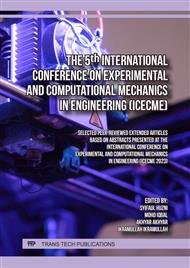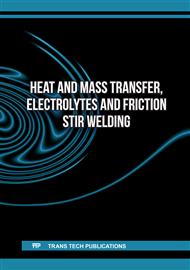p.35
p.45
p.55
p.63
p.71
p.83
p.101
p.123
p.135
Performance Analysis of an Open-Circuit Subsonic Wind Tunnel Using Computational Fluid Dynamics
Abstract:
The present study provides a comprehensive computational fluid dynamics analysis of the operation of an open-circuit subsonic wind tunnel. The analysis focuses on the uniformity in the test section, such as velocity distribution and pressure drop, which are crucial for wind tunnel performance. The inlet velocity from the contraction cone is altered, specifically 1.2 m/s, 2.4 m/s, and 3.5 m/s, for assessing the velocity of nine locations in the test section. The simulation results in the test section between the k-ε and k-ω viscous models were compared in this study. The highest velocity value was obtained at points 1, 3, 7, and 9 of the k-ω and k-ε viscous models at an inlet velocity of 3.5 m/s. The velocity differences in the test section between the k-ω and k-ε viscous models were about 0.01% to 0.11% at different inlet velocity. Furthermore, the highest pressure drop produced at an inlet velocity of 3.5 m/s is 173.33 Pa for the k-ω viscous model, followed by the k-ε at 160.82 Pa.
Info:
Periodical:
Pages:
71-81
Citation:
Online since:
May 2025
Keywords:
Price:
Сopyright:
© 2025 Trans Tech Publications Ltd. All Rights Reserved
Share:
Citation:



